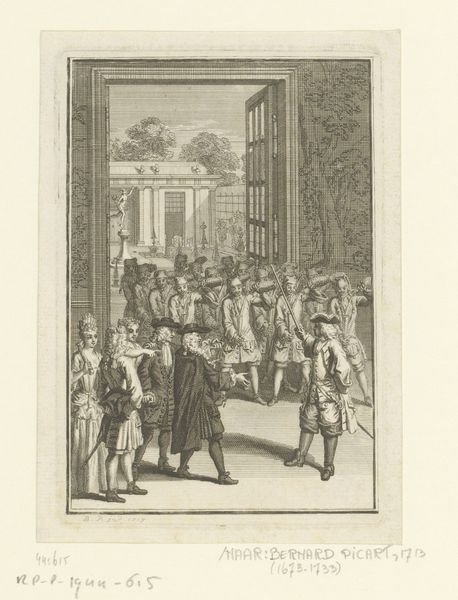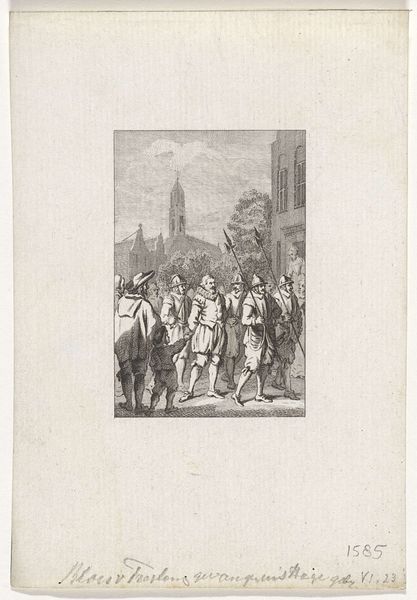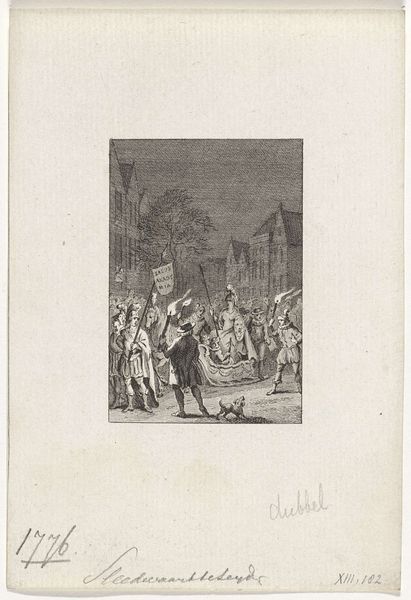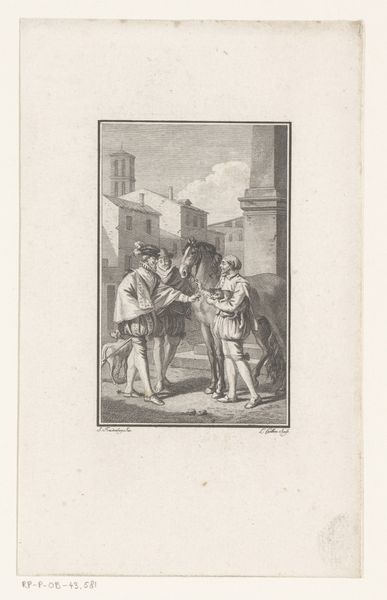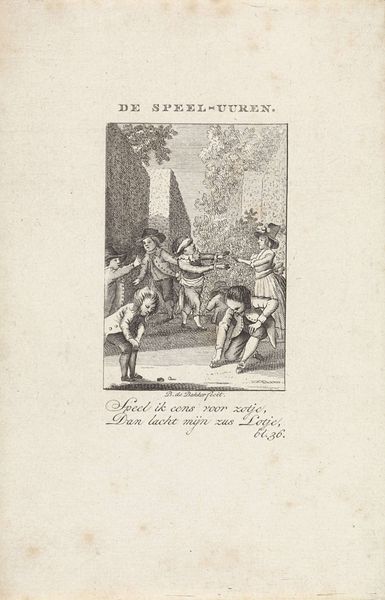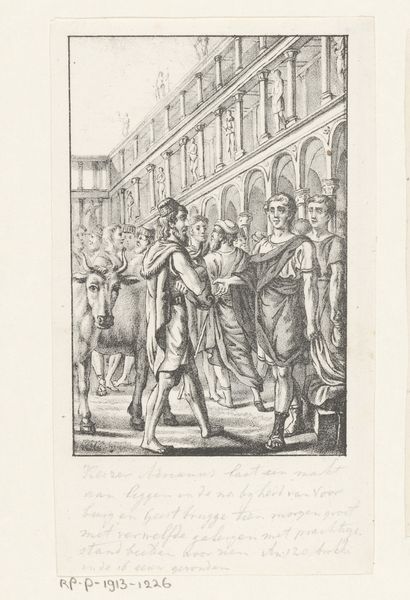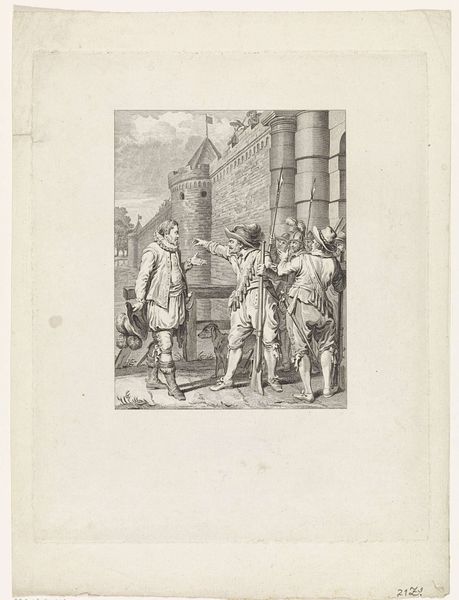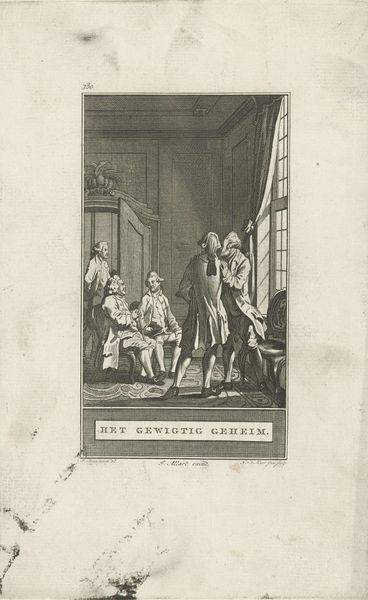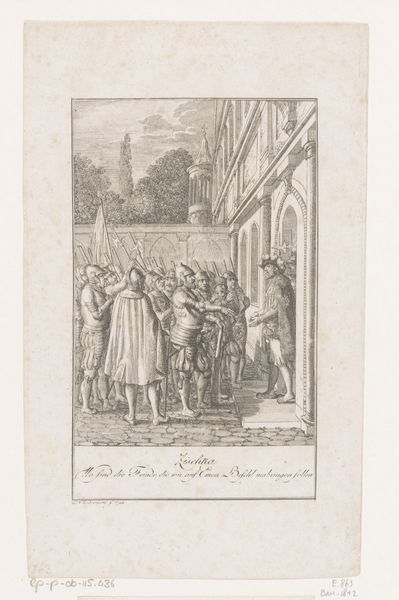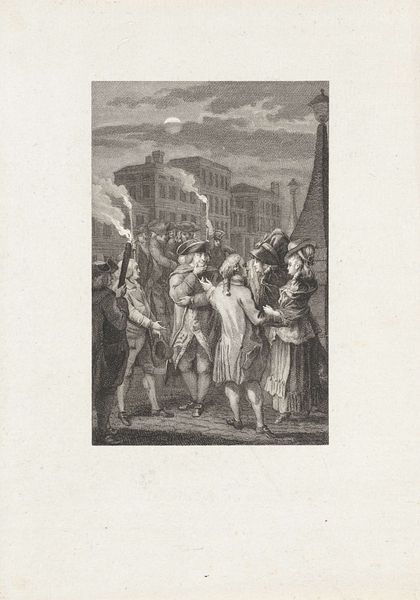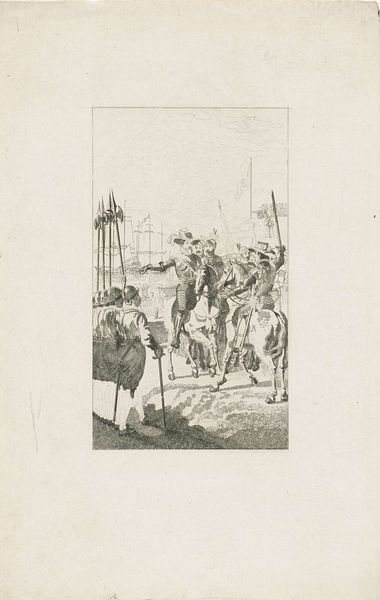
print, engraving
# print
#
genre-painting
#
history-painting
#
street
#
engraving
Dimensions: height 248 mm, width 156 mm
Copyright: Rijks Museum: Open Domain
Editor: This is "Man wordt op straat uitgelachen" or "Man Mocked in the Street" by Noach van der Meer the Younger, dating from 1777 or 1778. It's an engraving currently held at the Rijksmuseum. I’m immediately struck by the meanness of the scene – the way the crowd seems to be ganging up on this central figure. What kind of social dynamics are we seeing here? Curator: Look closer at how Van der Meer composes the street scene itself. Notice the lone figure hunched on the curb and the title of the piece; how the street then functions as a stage, illuminating the social performances taking place. How does this image reflect cultural memories around disability, class, and public ridicule? Editor: The ‘stage’ is interesting… and it makes the leering figures look more theatrical, perhaps less threatening and more about the role-play they assume to feel good about themselves. It almost feels like an inversion of moral responsibility – instead of empathy, we see mockery. Curator: Exactly. It evokes visual traditions of the carnivalesque, but deployed in a manner that judges, and makes permanent, the momentary transgression. Consider the figure in the window—almost like the playwright— observing the play unfold and embedding it within the visual culture. Where does the true disfigurement lie? Editor: I see your point – in the image, it seems like morality is askew, suggesting societal values might be perverted. The inscription below might be the place for the audience to orient themselves: in their sympathy for the 'Hinkenden' or people who limp along, excluded and shamed in everyday life. Curator: Precisely. The inscription creates a rupture, forcing us to consider who are the truly lame here. Do you agree that through an attention to costume and setting, we have access to how eighteenth-century audiences were provoked and taught about seeing themselves? Editor: Definitely, thinking about it as a visual lesson reframes my understanding entirely. Curator: And these lessons stay relevant. Editor: Absolutely. Thanks to this fresh approach to iconology, I understand how this genre scene isn’t only about surface depiction.
Comments
No comments
Be the first to comment and join the conversation on the ultimate creative platform.

